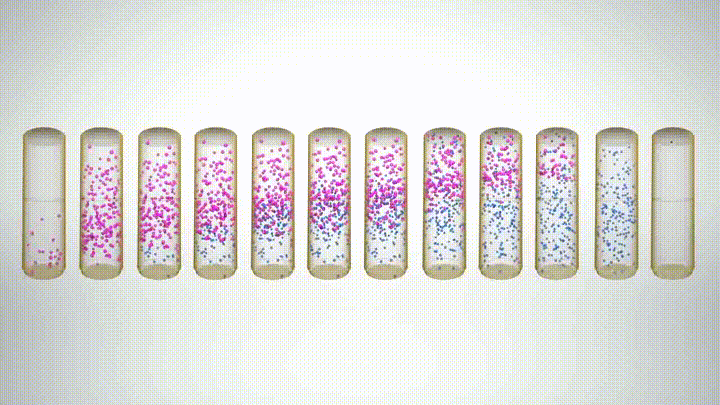1)Use a large number of dispensing valve notches (20 or more), and match with the charging/discharging distribution controller of each resin column. The process is greatly flexible and gradient elution is complete. Moreover, different resin columns can be treated with different eluents. This feature is not available in other chromatography systems. It is possible to develop a new type of chromatography process with a variety of adsorbents, so as to further improve product quality. Under the equal production capacity, less adsorbent is required;
2)The process lines are exclusively used. Each charging/discharging line is always transmitting the same kind of materials. While in other systems the charging/discharging materials of the same pipeline are constantly changing, in order to prevent mutual interference, pipeline must be washed in every transformation, and result in that the materials are artificially diluted;
3)The dead volume is small. The system’s rotary partition valve is located at the resin column center circumferentially arranged. It is perfectly symmetrical, thus minimizing the dead volume of the liquid in the system. The dead volume of liquid in the system is the same in each adsorption zone, thereby improving the separation efficiency;
4)The liquid inside of the pipeline is less than 2% of the resin volume in each resin column. Liquid separation always moves along the correct direction. There is no need for flushing/rinsing when passing each separation zone.
5)As the flushing operation is eliminated, the system has improved productivity, increased product recovery rate and the product concentrations.
6)The equipment modeling is compact, and the external piping volume is less than 1% of the resin volume. Complicated devices such as manifold switching valves, long-distance transportation of liquid, complex valve procedures and complex controllers are cancelled, which can enhance productivity and make it easier to operate and maintain;
7)The residual void is extremely small in the resin column, which can substantially eliminate demixing and deteriorating distribution in the separation process;
8)There is waste dilution and higher productivity per unit volume of the resin.
